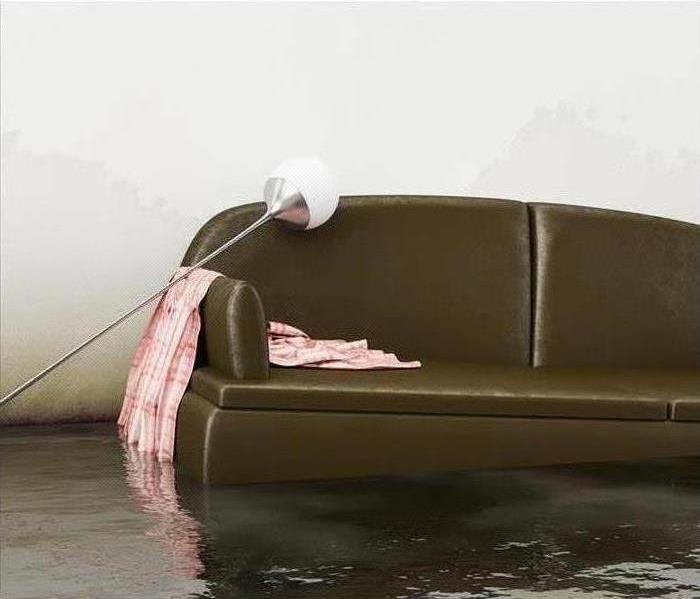Protect your home from flood waters. l SERVPRO® of The Lower Shore
3/30/2021 (Permalink)
Flooding is the most common disaster in the United States. It can be very costly and can occur anywhere and anytime it rains, even if your property is not located next to a large body of water.
Homeowners should know their flood-zone. You can begin to evaluate your risk by checking at FEMA’s online Flood Map Service Center. Locate the base flood elevation (BFE) for your home, or the elevation at which your building has a 1 % chance of flooding in a given year. Structures should be at least 3 foot above the BFE.
It is recommended you speak with your insurance agent about flood insurance as it pertains to your policy as flood damage is not typically covered by a standard homeowner policy. Just a few inches of water can cost thousands of dollars with data demonstrating over 25% of claims coming from areas outside of the high-risk flood zone. The National Flood Insurance Program can help you locate insurance.
Steps to Prepare for a Flood:
- Make an inventory of personal belongings by taking photos as well as a video of your property, household items and valuables if possible.
- Keep certifications, passports, medical records and other important documents like insurance paperwork in a watertight box.
- Raise electrical components at least 12 inches above your BFE and have utilities like HVAC units placed at higher elevations such as second story levels or even roofs. Install a sewer backflow valve to prevent sewage from returning to the structure. Regularly check to make sure your sump pump is operational and has a battery back-up if available for your unit.
- Check your property’s slope, to ensure water runs away from your structure and that gutters are free of debris. Reducing impervious surface, like concrete and asphalt with green spaces that absorb rainfall are additional measures to reduce flooding.
- Anchor loose property and propane tanks to prevent property damage and contamination of the flood water from chemical leakages.
If a flood is expected, move your valuables to higher ground. Elevate or move furniture if possible. Stay alert, follow the guidance of local officials. Never drive into flood waters, regardless of the apparent depth as there may be unseen currents. Make sure you have a plan in place and a “go kit” (an emergency supply kit consisting of a waterproof tub filled with drinking water, dry or canned food, batteries and other essentials). Be prepared for potential long term power outages.
Once a flooding disaster has passed, contact SERVPRO® of The Lower Shore to obtain assistance with your remediation needs at 410-749-2221.




 24/7 Emergency Service
24/7 Emergency Service